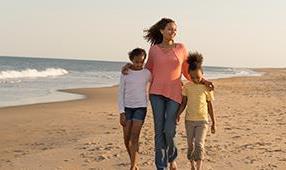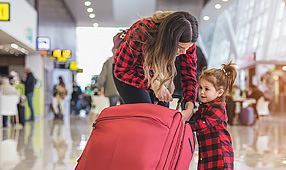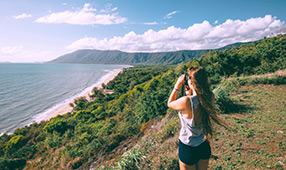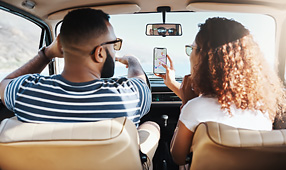We all know the importance of vacations—to recharge our batteries and spend time with our loved ones. But before you block out all visions of your classroom, consider spending a little time gathering inspirational items for your students in addition to all the great memories.
Plan to collect items that will inspire your students
“While vacationing at Disney, I picked up park maps written in Chinese to share with my students studying China,” said Christine Sepkowski, a sixth-grade teacher at North Pocono Middle School in Pennsylvania. “The maps also helped with geography review units. The students enjoyed the maps and found the information meaningful, which is essential for learning. Of course, I asked a Disney employee prior to taking 30 maps!”
Anything tactile can make a lesson feel more real to your students. Grab the local newspaper and travel magazines. If you travel abroad, bring back some of the currency and pamphlets in the native language. Remember to pick up some shells and sand from the beach or rocks from the mountains. One caveat: Make sure it’s legal to do so. Some natural items aren’t allowed to leave their locations, and this varies from place to place, especially in national parks.
Take advantage of high-tech ways to document your trip
Technology makes it easy to record events and share them with your students. During a trip to a National Park, take digital photos so you can make a slideshow or photo book, or create a collection of your smartphone photos on Instagram. You also can post them to Tumblr for later viewing in the classroom. While vacationing at the beach, go ahead and blog about high and low tides, with photos and links to sites about the moon’s effect. On your next camping trip, record a video while hiking and point out indigenous trees and plants as well as how you use orienteering skills. Record interviews with guides at historic sites and post to YouTube to watch when you’re back in the classroom.
Enhance your existing lessons with your vacation finds
Tap into your creative side and embellish your lessons. Some ties are obvious. Spanish-language materials work seamlessly in Spanish instruction. The maps in Mrs. Sepkowski’s example fit in to her lessons on geography and China. Creative writing assignments are natural extensions of vacation photos.
Did you bring part of the beach back with you? Elementary students can sort your shells by size and color. Older students can use the shells in probability units. Your science classes can chart the tides and make predictions based on the data. Using historical data on the Internet, students can chart the weather for a week at your vacation destination and at home to compare. Some lessons can be whole class, while others can use small groups or individual instruction.
Was historic Williamsburg your destination this year? Your state history lessons can be energized with photos from state landmarks or pamphlets from the Visitor Center. Did you hike part of the Appalachian Trail or head out to see the giant redwoods in Yosemite? Your lessons on trees and plants will be more engaging with videos and photos of your travels, rather than relying solely on your textbook.
Enjoy a much-deserved vacation!
Don’t underestimate the power of taking a well-deserved rest and experiencing other cultures to give you a better perspective in your classroom. The more we know, see and experience of our world, the better prepared we are to consider new viewpoints. So go ahead and plan your next vacation. You just might find new ways to spark your students’ learning.












